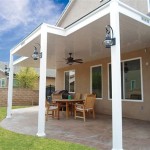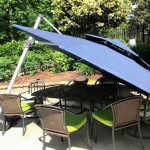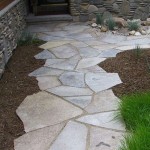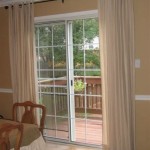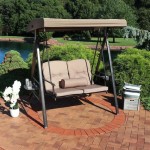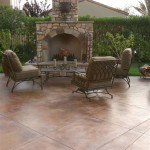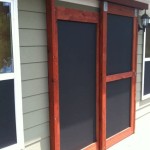Ways to Cover Outdoor Concrete Patio Slabs
Outdoor concrete patio slabs, while offering a durable and functional surface, often lack aesthetic appeal. Many homeowners seek ways to enhance the look and feel of their patios, covering the concrete to create a more inviting and comfortable outdoor living space. The options for covering concrete patio slabs are diverse, ranging from simple and cost-effective solutions to more elaborate and permanent installations. The choice depends on factors such as budget, desired aesthetic, durability requirements, and the level of maintenance one is willing to undertake.
Before embarking on any covering project, it is crucial to thoroughly clean the concrete slabs. Remove any debris, dirt, and mildew. Pressure washing is often the most effective method for achieving a clean surface. Allow the concrete to dry completely before applying any coverings or treatments. Depending on the chosen covering, it may also be necessary to repair any cracks or imperfections in the concrete to ensure a smooth and even base. Properly preparing the concrete will contribute significantly to the longevity and appearance of the chosen covering.
The selection of a patio covering should align with the intended use of the space. A patio designed for frequent entertaining might benefit from a durable and visually appealing option, while a less frequently used space could be adequately addressed with a more budget-friendly solution. Consideration should also be given to the climate and weather conditions prevalent in the area. Porous materials might not be suitable for regions with heavy rainfall or freezing temperatures, as they can be susceptible to water damage and cracking. Conversely, dark-colored coverings can become excessively hot in sunny climates, making them uncomfortable to walk on.
Painting or Staining Concrete Patio Slabs
One of the most economical and straightforward methods for covering concrete patio slabs is through painting or staining. These options provide a wide range of colors and finishes, allowing for customization to match existing landscaping or outdoor décor. Concrete paint is typically applied as a coating, creating a solid color that conceals the underlying concrete. Concrete stain, on the other hand, penetrates the concrete surface, creating a translucent effect that highlights the natural texture and variations in the concrete. Stains can be either water-based or acid-based, with acid-based stains offering a more permanent and mottled appearance.
The preparation phase is critical for both painting and staining. The concrete must be thoroughly cleaned and any cracks or imperfections repaired. For painting, a primer is generally recommended to ensure proper adhesion of the paint. Multiple coats of paint may be necessary to achieve the desired color and coverage. Concrete stain typically requires less preparation than paint, but proper application is essential to avoid uneven coloring or blotches. Both painted and stained concrete should be sealed with a protective sealant to enhance durability and resistance to weathering and staining.
While painting and staining offer an affordable and customizable solution, they require periodic maintenance. Painted surfaces may chip or peel over time, particularly in high-traffic areas or regions with harsh weather conditions. Stained surfaces are generally more durable, but can fade over time due to exposure to sunlight. Regular cleaning and resealing are necessary to maintain the appearance and longevity of painted or stained concrete patios. The expected lifespan of a painted or stained patio is typically shorter than that of other covering options, such as pavers or decking.
Installing Pavers or Flagstone Over Concrete Patio Slabs
For a more substantial and visually appealing covering, pavers or flagstone offer a range of options. Pavers, typically made from concrete or brick, come in a variety of shapes, sizes, and colors, allowing for intricate designs and patterns. Flagstone, a natural stone, provides a more rustic and irregular appearance. Both pavers and flagstone can be installed directly over existing concrete slabs, providing a durable and attractive surface.
The installation process typically involves laying a base of sand or gravel over the concrete slabs to provide a level and stable surface. The pavers or flagstone are then laid on top of the base, with spacing between the stones filled with sand or polymeric sand. Polymeric sand, a mixture of sand and polymers, helps to stabilize the pavers and prevent weed growth. Proper drainage is crucial to prevent water from accumulating beneath the pavers, which can lead to shifting or cracking. This can be accomplished by ensuring a slight slope away from the house and incorporating drainage channels if necessary.
Pavers and flagstone offer a durable and long-lasting covering option. They are resistant to cracking and weathering, and can withstand heavy foot traffic. The natural beauty of flagstone adds a unique aesthetic appeal to any patio. While the initial installation cost of pavers and flagstone is higher than that of painting or staining, their longevity and low maintenance requirements make them a cost-effective choice in the long run. Periodic cleaning and resealing may be necessary to maintain their appearance, but overall, pavers and flagstone are a durable and aesthetically pleasing option for covering concrete patio slabs.
Adding a Deck on Top of Concrete Patio Slabs
Constructing a deck over existing concrete patio slabs provides a more elevated and distinct outdoor living space. A deck offers a raised platform, creating a visual separation from the surrounding landscape and providing a more comfortable and inviting area for relaxation and entertaining. Decks can be constructed from a variety of materials, including wood, composite decking, and aluminum. Wood offers a natural and classic look, while composite decking provides a low-maintenance and durable alternative. Aluminum decking is a lightweight and weather-resistant option.
The construction process involves building a frame or substructure on top of the concrete slabs. The frame is typically constructed from pressure-treated lumber to resist rot and decay. The decking material is then attached to the frame, creating a solid and level surface. Proper spacing between the decking boards is essential to allow for expansion and contraction due to temperature changes and to facilitate drainage. Railings and stairs can be added to the deck to enhance safety and accessibility.
A deck offers several advantages over other covering options. It provides a more comfortable walking surface, particularly in hot weather, as the deck boards do not retain heat as readily as concrete or pavers. The raised platform offers improved drainage and ventilation, preventing moisture from accumulating beneath the deck. Decks can also be customized to incorporate features such as built-in seating, planters, and outdoor lighting. While the initial installation cost of a deck is higher than that of other covering options, it provides a significant enhancement to the value and usability of the outdoor space.
The type of decking material impacts the overall maintenance requirements. Wood decks require periodic staining or sealing to protect them from the elements and prevent rot and decay. Composite decking is generally low-maintenance, requiring only occasional cleaning. Aluminum decking is virtually maintenance-free. The lifespan of a deck depends on the quality of the materials used and the level of maintenance provided.
Beyond these primary options, other solutions exist, such as outdoor rugs and artificial turf. Outdoor rugs offer a temporary and easily changeable covering, adding color and texture to the patio. Artificial turf provides a soft and green surface, creating a lawn-like feel. These options are generally less permanent and require less installation effort than painting, pavers, or decking. They also offer a lower initial cost, making them suitable for those seeking a quick and affordable patio transformation.
Ultimately, the best way to cover outdoor concrete patio slabs depends on individual preferences, budget constraints, and the desired outcome. Careful consideration of the factors outlined above will help homeowners choose the covering option that best suits their needs and enhances their outdoor living space.

Easy Concrete Patio Coverup Ideas The Garden Glove

Easy Concrete Patio Coverup Ideas The Garden Glove

Easy Concrete Patio Coverup Ideas The Garden Glove

The Best Way To Cover An Ugly Concrete Patio

13 Great Diy Outdoor Patio Flooring Ideas On A Budget The Garden Glove

Easy Concrete Patio Coverup Ideas The Garden Glove

How I Made My Patio Look New Again With Olympic Rescue It

Turning And Ugly Concrete Slab Into A Faux Stone Patio

Inexpensive Ways To Cover Concrete Patio Elevate Deco

Easy Concrete Patio Coverup Ideas The Garden Glove
Related Posts

